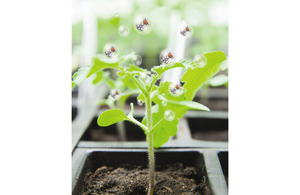MOD scientists use flower power to detect toxic substances
New research by the MOD's Defence Science and Technology Laboratory has found that plants could be used to detect nerve agents similar to those used in the sarin gas attacks on the Tokyo subway in 1995.

New research by the MOD's Defence Science and Technology Laboratory has found that plants could be used to detect nerve agents [Picture: Crown Copyright/MOD 2012]
Nerve agents are extremely toxic substances, banned by the Chemical Weapons Convention (CWC).The CWC prohibits the development, production, acquisition, stockpiling, retention, transfer or use of chemical weapons.
Accurate identification of chemical warfare agents (CWAs) is an essential tool for verification of compliance with the CWC, but detection is often difficult as the chemicals can be absorbed by soil or washed away by groundwater.
The Defence Science and Technology Laboratory (Dstl) and the University of Central Lancashire have been researching ways to improve the detection of CWAs by contaminating soil with chemical agents and cultivating and analysing the plants that are grown in it.
The scientists found that certain plants - such as the common mustard plant - can absorb the nerve agent from contaminated soil, which can then be extracted from the plant using ethanol.
Vegetation can also act as a time capsule, where key markers of the nerve agents may remain in the plants for up to 28 days, allowing a longer time window for scientists to detect, analyse and identify CWAs.
The Dstl’s Matthew Gravett said:
This research will improve our sampling and analysis capability and provide the UK and international scientific community with a more effective way of detecting chemical warfare agents.
The UK designated laboratory for detecting CWAs has been located at Dstl since the CWC came into force in 1997. Dstl scientists, in collaboration with those at the University of Central Lancashire, hope to extend this research to look at longer testing times and different soils to improve this detection capability.
The Dstl’s full report can be found under Related Links.